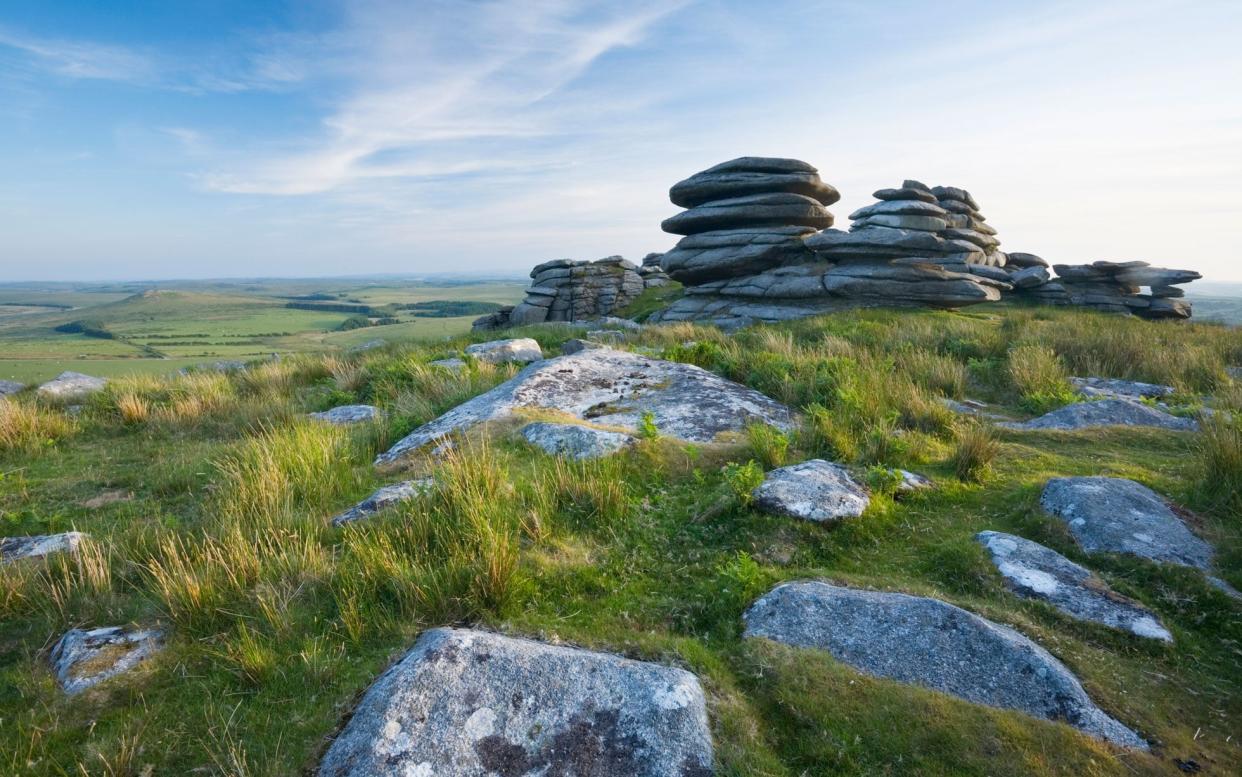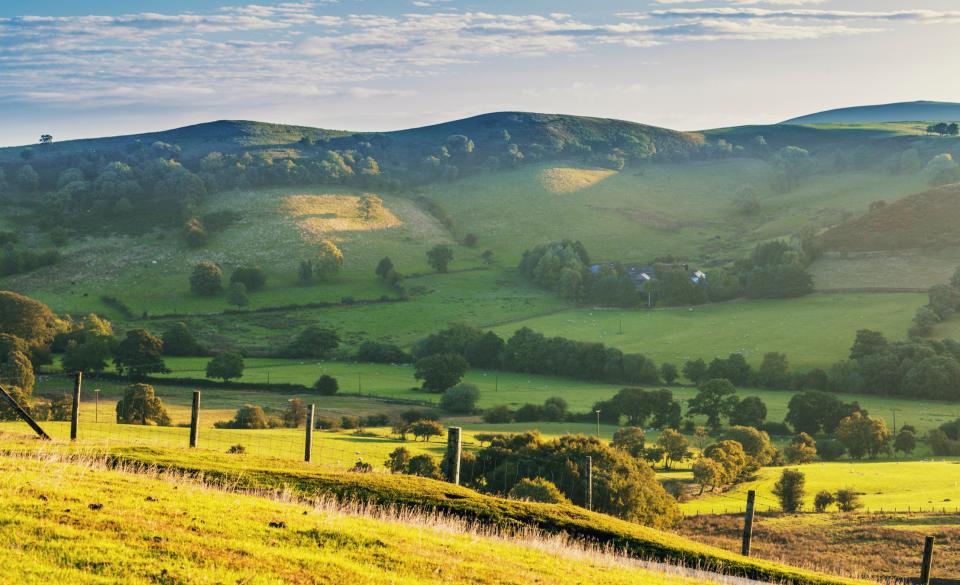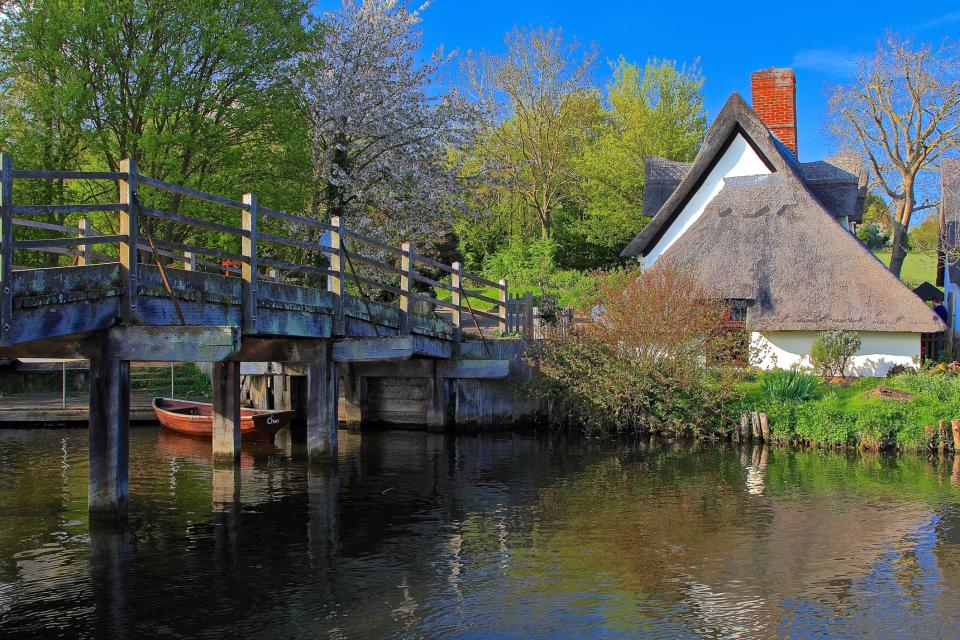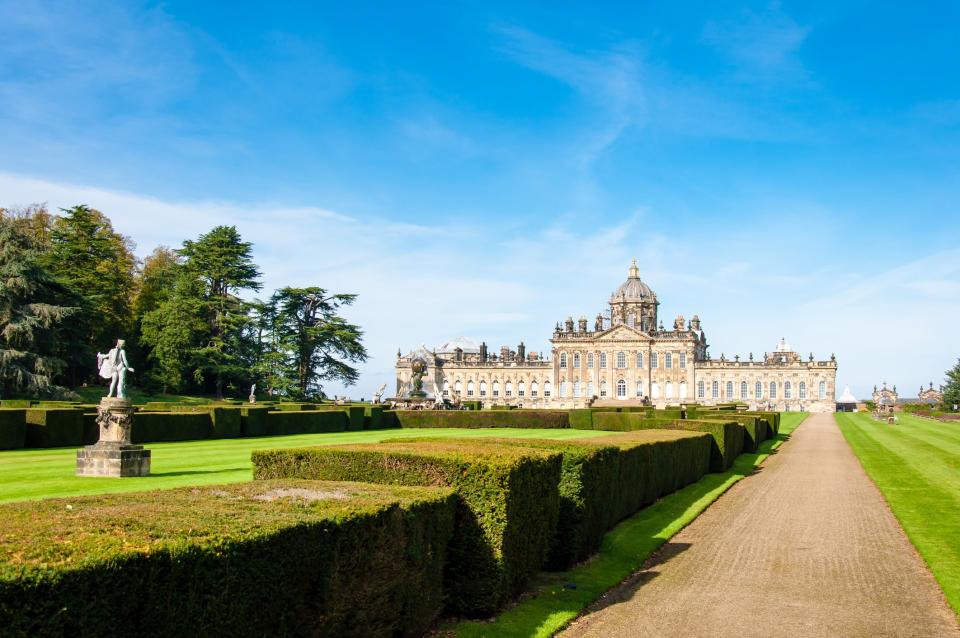Lesser-known English beauty spots to discover this weekend

This weekend, it is anticipated that people will begin to stretch their wings a little further and take a drive into the countryside. Eschew the popular National Parks and tourist traps, where high visitor numbers could result in angry locals. Instead, visit one of England’s lesser-known Areas of Outstanding Natural Beauty (AONB).
Blackdown Hills
On the border between Somerset and Devon, the Blackdown Hills (blackdownhillsaonb.org.uk) are the Cinderella of the West Country, overlooked by those bound for Exmoor and Dartmoor. Below their steep ridges and high plateaus lie postcard-pretty hedgerows, copses and winding lanes. To enjoy this panorama, climb Staple Hill or Castle Neroche for views of the singular Glastonbury Tor. Butterflies abound in the flower-rich heathlands of Sampford Commons. The River Otter has its source in the Blackdown Hills and you may well catch sight not only of otters but of recently reintroduced beavers. Among the hills’ fine churches, visit Wolford Chapel for its stunning Jacobean interiors.
Walk
There are a number of walks to enjoy in the area, with the four-mile walk from Chard to Chaffcombe offering good views.
North Wessex Downs
The western reaches of the chalk hills spanning Wiltshire, Berkshire and parts of Oxfordshire are rich in Neolithic sites (northwessexdowns.org.uk). Visit the most impressive along the Great Stones Way, snaking south from Barbury Castle hillfort near Swindon to Old Sarum via Avebury Stone Circle, Silbury Hill – Europe’s tallest prehistoric artificial mound – and atmospheric West Kennet Long Barrow. Away from the standing stones and burial barrows, chase butterflies on Watership Down (yes, that one), or meander along the Kennet and Avon Canal by bike – the 82-mile Sustrans route between Reading and Bath visits idyllic country pubs, impressive aqueducts and the spectacular Caen Hill Flight of locks near Devizes.
Walk
There are a selection of walks to enjoy in the area, including the King Alfred Trail.

Shropshire Hills
Criminally – some would say thankfully – overlooked by most visitors, the uplands south of Shrewsbury pack in a surprisingly varied array of crags, valleys, ancient sites and natural delights (shropshirehillsaonb.co.uk). Of the claimed 50 hills, perhaps best known to walkers is the Long Mynd, the broad-shouldered ridge above Church Stretton – swathed in heath, traversed by the ancient Portway, littered by archaeological sites, it’s endlessly rewarding. Wilder and rockier is Stiperstones, a tumble of tors and scree, while the Wrekin is the peak-baggers’ pick. This strategic stronghold on the Welsh border is guarded by numerous castles and earthworks, including a stretch of Offa’s Dyke. Most beguiling is Stokesay Castle, a fortified medieval manor house of Harry Potter-strength enchantment.
Walk
Head to the top of Carding Mill Valley on a walk along Long Mynd.

Chichester Harbour
One the few remaining undeveloped coastal areas in Southern England, Chichester Harbour (conservancy.co.uk) in West Sussex comprises a series of tidal inlets with a narrow mouth to the sea. All is extremely easy on the eye, with picturesque creek-side villages encircling a shoreline of wind-sculptured oaks and hawthorns and saltmarsh and mudflats that are a haven for 55,000 birds. On dry land, the AONB has 64 miles of rights of way, along the shoreline and farmland, to explore. Villages to nose around include Itchenor and West Wittering. A walk around Thorney Island (actually, a peninsula) takes you past St Nicholas, described as the ‘least known and altogether utmost church in Sussex’.
Walk
Stroll out on a circular four-mile route to East Head and Ellanore, taking in coastal paths and leafy lanes along the way.

Cranborne Chase
Stand on the scarp of Winklebury Hill in Wiltshire above the village of Berwick St John and you are surveying an ancient landscape from a position of equal antiquity (ccwwdaonb.org.uk). The arable farmland before you dates to the Bronze Age and was reinforced in Anglo-Saxon times. This rolling chalk topography is the defining feature of Cranborne Chase AONB, which overlaps the boundaries of Wiltshire, Dorset, Hampshire and Somerset. Away from the high brows, you can explore ancient woodlands such as Grovely Wood or the superb, isolated oak tree at Longbridge Deverill. As the days get longer perhaps visit on clear evenings, as the absence of light pollution sees the AONB enjoy International Dark Sky Reserve status.
Walk
Head to the National Trust car park at Win Green, which is now open but with limited spaces, and take a stroll around the highest point in Cranborne Chase, taking in views of the distant Isle of Wight.

Dedham Vale
Dedham Vale AONB (dedhamvalestourvalley.org) tracks the River Stour Valley as it wriggles its way northwest-southeast through the archetypical English landscape of the Suffolk-Essex border. Made famous by Sir John Constable, who was born here, the valley features that he depicted, such as rolling farmland, rivers and meadows, are still apparent and little changed. The meandering lanes and picturesque byways of the Stour Valley are ideal for cyclists or you can explore on foot – the AONB website has good online routes for both two wheels and two feet. As you explore, look out for skylarks heaving themselves into the air and barn owls quartering along field margins at dusk. When they reopen, architectural gems such as Kentwell Hall and Melford Hall should be high on the list for visiting.
Walk
Explore the Stour Valley and Dedham Vale on a walk that follows in the footsteps of landscape artist John Constable.

High Weald
A medieval landscape of wooded hills and sandstone outcrops, the High Weald (highweald.org) spreads its charms across parts of Kent, Sussex and Surrey. Shoehorned around busy southeast towns such as Hastings and Royal Tunbridge Wells, the rural hinterland features small manor houses, castles and beautiful parks and gardens. Explore Bewl Water - the largest area of inland water in the South East of England – or Harrison's Rocks - a large sandstone climbing crag. Try walking part of the High Weald Landscape trail, a 90-mile route that meanders through the AONB from east to west, linking ridge-top villages and wildlife-rich unimproved grasslands.
Walk
There are a number of circular walks in High Weald of varying lengths that are good for a range of fitness levels.
Howardian Hills
Named for the Howard family, whose eponymous stately home, Castle Howard, is the signature site within the AONB, the Howardian Hills (howardianhills.org.uk) lie between the North York Moors National Park, the Yorkshire Wolds and the Vale of York. This is a landscape pitted with scenic villages, classic parkland landscapes and Iron Age earthworks. When it reopens the Howard family’s magnificent 18th century castle, along with the Tudor-era Nunnington Hall by the River Rye, should not be missed but when circumstances permit you could take a walk alongside the River Derwent with views of the Augustinian Kirkham Priory or explore the upland plateau of Dalby Forest.
Walk
There are a number of bridle ways and footpaths to be explored, with a range of walks to chose from including short flat strolls and longer hillier walks.

Northumberland Coast
Hugging the North Sea coast in the most north-easterly English county, the Northumberland Coast (northumberlandcoastaonb.org) is an AONB of high drama, with sweeping sandy beaches and isolated islands. The sea here has always been the dominant force and hard to reach coastal locations, such as Lindisfarne, were important for the pioneering monks who made it here in the 7th Century. As well as the tidal island of Holy Island, the coastline is punctuated by castles at Bamburgh, Dunstanburgh and Warkworth and the town defences of Berwick. Stroll along the superb beaches at Spittal, Bamburgh and Low Newton.
Walk
Pass the the impressive ruins of Dunstanburgh Castle and stroll along Embleton Sands before reaching Low Newton by the Sea on the Craster to Low Newton coastal walk.

Tamar Valley
A wide wooded and deeply incised river valley, the AONB (tamarvalley.org.uk) embraces the rivers Tamar, Tavy and Lynher and stretches from Bodmin Moor to Dartmoor and the beaches of East Cornwall to the towns of West Devon. The landscape is dotted with crumbling copper and tin mines and Tudor houses such as the squat, granite Cotehele House and Buckland Abbey, the former home of Sir Francis Drake. Cyclists can explore the 14 miles of the Tamar Trails near Gunnislake while a short section on foot of the Discovery Trail is a great option for families and involves views of Kit Hill and its trademark chimney stack.
Walk
The car park at Cotehele will open again, with limited spaces, from May 18. From here you will be able to marvel at the exterior of the Tudor house and enjoy walks through the surrounding valleys.
For more information on England's Areas of Natural Beauty (AONB): visitengland.com; landscapesforlife.org.uk

